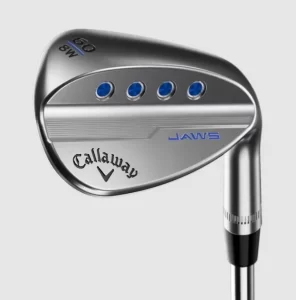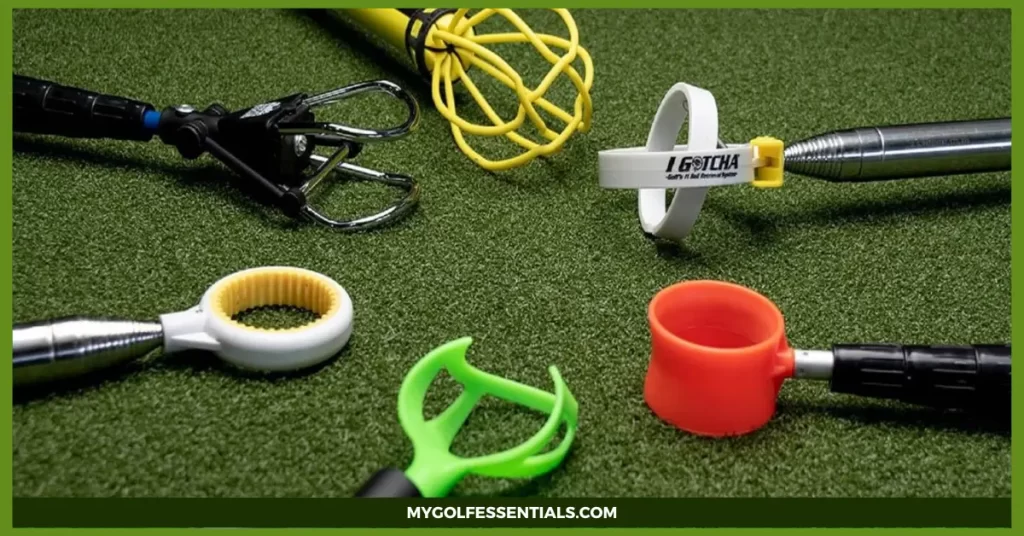
Are you a golf lover looking for the best sand wedge to improve your game? It can be hard to pick the right club, especially when evaluating the loft. This blog post’ll explore why understanding sand wedge lofts is important and how it impacts your swing. Our goal is to equip you with all of the information – from beginners’ basics to advanced techniques – so that you can make an informed decision about which sand wedge would work best for you!
Introducing the Sand Wedge Loft
The term’ Sand Wedge Loft’ describes the angle of a golf club’s leading edge relative to the ground. This angle determines how much spin and loft you get when hitting your ball, making it an important factor when selecting the right sand wedge for your game.
The higher the Sand Wedge Loft, the more backspin is imparted to the ball when you swing. A higher loft also increases the vertical launch angle of your shot, allowing you to hit shots that ‘float’ through the air and land softly on the green. This is ideal for shots around the green or from bunkers where accuracy is key.

The Design of a Sand Wedge
Regarding golf, the sand wedge is an essential club in any golfer’s bag. It has a unique design that allows you to take advantage of different lies in hard-to-reach places. The sand wedge is designed with a higher loft angle than other clubs, allowing for greater control when hitting shots from difficult terrain like bunkers and thick rough.
A sand wedge’s loft angle is a key factor in determining its performance – the higher the loft, the more spin you will get off your shots. The standard loft for a sand wedge is 56 degrees, but they can range from 44 to 64 degrees, depending on the club and manufacturer.
The other important element of a sand wedge is its bounce. Bounce refers to the angle of the sole relative to the ground when you address the ball, which helps control how much a club “skids” through the sand or rough.
A higher degree of bounce will help keep your club face from digging too deep into the sand and allow it to skim over it more easily, while less bounce will dig down deeper.
When Should You NOT Use a Sand Wedge?
Although a sand wedge is an important club in your golf bag, it’s not the right choice for every situation.
First, if you are just getting started with golf and don’t yet understand the basics of loft and trajectory, it’s best to avoid using a sand wedge until you become more comfortable with your swing and technique.
Sand wedges can be difficult to master, and the high loft of a sand wedge can lead to too much spin on the ball if your swing is not yet developed.
Second, even experienced golfers should avoid using a sand wedge in certain situations. For example, when playing a drive from the fairway, it’s best to choose your driver or a long iron club instead of a sand wedge.
The driver and long iron have a lower loft than a sand wedge, which helps create an optimal launch angle. Additionally, the sandy terrain of a bunker can be difficult to hit with a sand wedge due to the high loft and increased backspin on the ball.

All the Wedges Explained
Golfers have a variety of wedges available to them, each with its unique set of features. The sand wedge is one of the most important golf equipment for players looking to hit accurate shots from difficult lies. Understanding these clubs’ loft and bounce angle is essential for getting the best performance out of your swing.
A sand wedge has an increased loft compared to other wedges, typically between 54 and 56 degrees. The added loft helps launch the golf ball into the air for greater accuracy on shots from sand traps and deep rough. A sand wedge usually has 10-20 degrees of bounce angle, allowing it to “dig” through the sand rather than skidding off the top.
To determine the correct sand wedge loft for your swing, consider the following factors:
Swing speed:
Faster swings require more loft to get the ball airborne quickly. Slower swings benefit from less loft as they take longer to reach their peak height.
Course conditions:
Firm turf requires less loft, while wet or soft conditions need an additional lift to prevent bouncing short of the target.
Lie:
A tight lie requires less loft to reduce spin, while a challenging lie (like one in a bunker or rough) needs more lift for proper flight and distance.
What Degree is a Sand Wedge?
The loft of a sand wedge is one of the most important features to consider when buying one. Generally, the lofts on sand wedges range from 54° to 58°, and some lower-lofted clubs can even reach degrees as low as 50° or 52°. The loft angle affects your ball’s trajectory and spin rate, so it’s important to understand how each degree affects your game.
To start, the lower lofted clubs are designed for maximum distance. The shallower angle of attack on the ball will produce a higher ball flight than a sand wedge with more loft, allowing you to carry the ball further before it drops. However, the spin rate is significantly reduced due to the shallower angle.
Mid-lofted sand wedges are the most versatile, with a loft degree typically between 54° and 56°. The mid-range angles create a predictable trajectory and spin rate for your shots, making them ideal for shots around the green. You should consider this loft degree if you’re looking for precision when hitting 20 yards or less.
The higher-lofted sand wedges (56° to 58°) are great for precision work and hitting close-range shots – they provide a high spin rate and low trajectory to control your ball. It’s important to note that the maximum distance will be reduced with these clubs; however, they are great for hitting shots within a few feet of the pin.
54 vs. 56 Degree Sand Wedge
The main difference between the 54 and 56-degree sand wedges is in the loft angle. The 54-degree wedge has a higher loft angle than the 56-degree wedge, which will launch the ball higher, giving you greater control over your shot when playing from bunkers or other shallow lies. The 54-degree also features more bounce, which will help you to better navigate through sand or other challenging lies.
The 56-degree wedge, on the other hand, has a lower loft angle and less bounce than the 54-degree wedge. This means it won’t launch the ball as high but requires less finesse when playing from deep bunkers and other difficult lies.
Both wedges will effectively get you out of the sand, but it all depends on the situations you will face on the course. One wedge may work better for you, depending on your swing speed and preferences.
Golf Wedges Lie Angle
The lie angle of a golf lob wedge lofts is an important factor to consider when choosing the right club for your game. The lie angle is the angle between the shaft and the sole of the club head, and it affects how the club interacts with the ground when you make contact with the ball. A proper lie angle will allow you to hit straight shots and accurately control your ball’s flight.
The most common lie angle for a golf pitching wedge loft is between 64° and 68°, depending on the height and body type of the player. A higher lie angle will help to promote a higher launch trajectory, while a lower lie angle will provide more spin and control around the green.
Finding the proper lie angle for your game by testing different clubs and observing the results is important. In addition to controlling the launch trajectory, the lie angle also affects how much of the clubface can be used when you contact the ball.
If your lie angle is too low, it will cause excessive digging into the ground, making it difficult to get the clubhead square to the ball and produce solid pitch shots. If your lie angle is too high, it will cause you to hit fat or thin shots due to not getting enough of the face behind the ball.
FAQs
How Do I Choose The Right Sand Wedge Loft For Me?
Choosing the right sand lob wedges loft is important when deciding what golf clubs to purchase. To help make your decision, it’s essential to know your personal needs and preferences.
Consider your experience level, swing speed, and the bunker shots you prefer to hit.
What are the benefits of using a sand wedge?
Sand wedges can be an incredibly beneficial club in your bag, especially if you often face difficult shots around the green. Sand gap wedges are designed with wide soles and higher lofts, which makes them great for getting out of sand traps or roughs. They also provide more spin on approach shots than regular pitching wedges, allowing you to better control your ball flight and get more accuracy with your shots.
What Type Of Shaft Should I Use With My Sand Wedge?
The right shaft for your sand lob wedge loft will depend on several factors. Your swing speed and skill level are important considerations when determining the flex of your shaft. Generally, a stiffer shaft is recommended for experienced golfers with faster swing speeds.
What is a 60-degree wedge for?
Incidentally, the 60-degree pitching gap wedge is the most versatile club in your bag. It’s perfect for shots from softer sand and roughs and chip and pitch shots around the green. The higher loft of this wedge setup allows you to generate a lot of backspin to help you control your ball flight with more accuracy. This also gives you more options when coordinating your sand wedge loft with the rest of your clubs is important to maximize the benefit of each one.
What is a 48-degree wedge called?
Incidentally, the 48-degree wedge is one of the most popular types and is often called a “sand wedge.” This club is designed for shots from sand traps or deeper roughs, and its high loft allows you to generate a backspin on your approach shots with more accuracy.
Conclusion
I hope this article has helped provide you with information on creating an effective content marketing strategy. Content marketing is a powerful way to reach your target audience and ensure they know your services or products.
Using the right strategy can help you achieve greater success, so take the time to plan out what kind of content you want to produce and how you’ll use it to reach your target audience.
With some dedication and creativity, you can create an effective content marketing plan to give your business the edge it needs to succeed.



